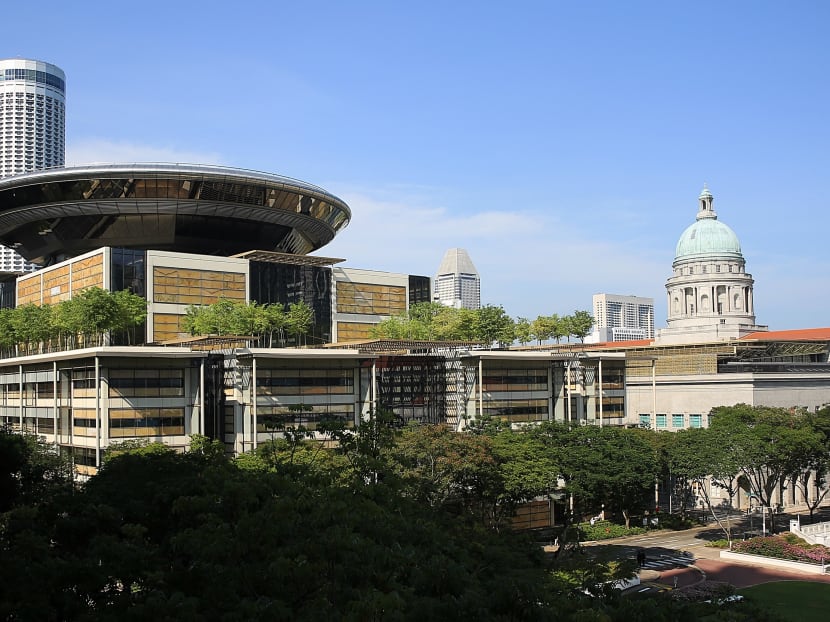Two men convicted of drug trafficking escape death row after acquittal by apex court
SINGAPORE — Two men convicted of drug trafficking have escaped the gallows, after the Court of Appeal found them not guilty and acquitted them in a split 2-1 decision.

Judges from the Court of Appeal, in acquitting two men who were facing the death penalty for drug trafficking offences, said that two inconsistent narratives emerged during the trial as to how the drugs were handled by the arresting officers.
SINGAPORE — Two men convicted of drug trafficking have escaped the gallows, after the Court of Appeal found them not guilty and acquitted them in a split 2-1 decision.
Mohamed Affandi Rosli and Mohamad Fadzli Ahmad had appealed against their convictions in the High Court — Affandi for trafficking 132.82g of diamorphine, also known as heroin, and Fadzli for abetting by instigating the trafficking.
Both were given the mandatory death penalty for the offences.
In a written judgment issued on Wednesday (Dec 5), Chief Justice Sundaresh Menon and Senior Judge Chao Hick Tin granted both appeals.
They found that the prosecution had failed to establish, beyond a reasonable doubt, the chain of custody of the drug exhibits from the time they were seized to the time the Health Sciences Authority (HSA) analysed them, such that the drug exhibits seized were the substances eventually analysed.
However, Judge of Appeal Tay Yong Kwang disagreed, saying there was no break in the chain of custody, and that Fadzli had abetted Affandi.
After their trial in the High Court, Affandi and Fadzli were also convicted of other drug-related charges that did not carry the death penalty, but the prosecution at the time sought a discharge not amounting to an acquittal for them, in light of their capital punishment.
With the latest development, the apex court will hear at a later date any further orders that may be sought by the prosecution and lawyers in connection with that.
BACKGROUND TO THE CASE
On July 12, 2013, officers from the Central Narcotics Bureau (CNB) inspected Affandi’s car and found eight bundles of drugs containing 132.82g of diamorphine, as well as four packets of drugs containing methamphetamine. Affandi was a fire safety supervisor working at Marina Bay Sands then.
Fadzli, a part-time mover, was arrested on the same day. CNB officers found four packets of drugs containing methamphetamine in his car, and he later surrendered two packets of nimetazepam tablets when officers searched his flat.
Affandi said that the diamorphine belonged to Fadzli, and that he was only in possession of the bundles until Fadzli was ready to collect them.
Fadzli denied knowledge of the diamorphine, claiming that he had met Affandi that afternoon to collect groceries from him to donate to an orphanage.
During the High Court trial, Affandi’s main defence was that there were serious questions surrounding the chain of custody of the drugs.
However, the High Court judge rejected this argument, saying it was not enough for the defence to suggest that there was a real break in the chain of custody without indicating when and how it might have happened.
The judge also found that Fadzli was seeking to distance himself from Affandi, and would have no reason to do so if he had nothing to hide.
THE APPEAL
Delivering the majority decision, Chief Justice Menon noted that “two inconsistent narratives” emerged during the trial as to how the drugs were handled by the arresting officers.
Accounts by two CNB officers showed that there were inconsistencies as to where the drug exhibits were or who held them at several points — such as during the time the arresting officers were searching Affandi’s flat, and after they returned to the CNB’s headquarters.
The prosecution is first required to account for the movement of the exhibits from when they were seized to the point of analysis by the HSA, the Chief Justice noted.
It would then be for the defence to raise reasonable doubt that there was a break in the chain of custody.
However, neither of the “two complete and mutually exclusive” chains of custody that emerged were disproved.
“We respectfully disagree with the (High Court) judge’s conclusion that the defence had to show ‘that the exhibits have left the custody of the officers, or that unauthorised parties had access to them at some time during that period, or that the exhibits have been interfered with’. Instead, the onus is first and foremost on the prosecution to prove the chain of custody beyond reasonable doubt,” the majority judges said in the written judgment.
Neither Affandi’s nor Fadzli’s DNA was found on the bundles of diamorphine as well, they added.
Judge of Appeal Tay, in delivering the minority decision, found that the two inconsistent narratives did not suggest there was a break in the chain of custody.
He noted that the drug exhibits were always in a trash bag and in the custody of the CNB officers, and there was no evidence they had been mixed up with other exhibits.
Along with the other two appeal judges, he also rejected the defence’s argument that the drug exhibits could have been tampered with or contaminated.
The defence had argued that after the investigating officer took possession of the exhibits, she left them on the floor of her office, unsealed and unsigned, for almost 34 hours instead of locking them in a safe or steel cabinet.
However, the argument was “premised on a mere theoretical possibility”, Mr Tay said.
Chief Justice Menon and Senior Judge Chao also said that the defence’s argument was speculative as the investigating officer’s office was locked and even though the keys to her office were centrally available, the officer’s personal authorisation was required before anyone else could enter it. During the period in question, no one had requested such access, and there was nothing to suggest that the protocol had been compromised.








